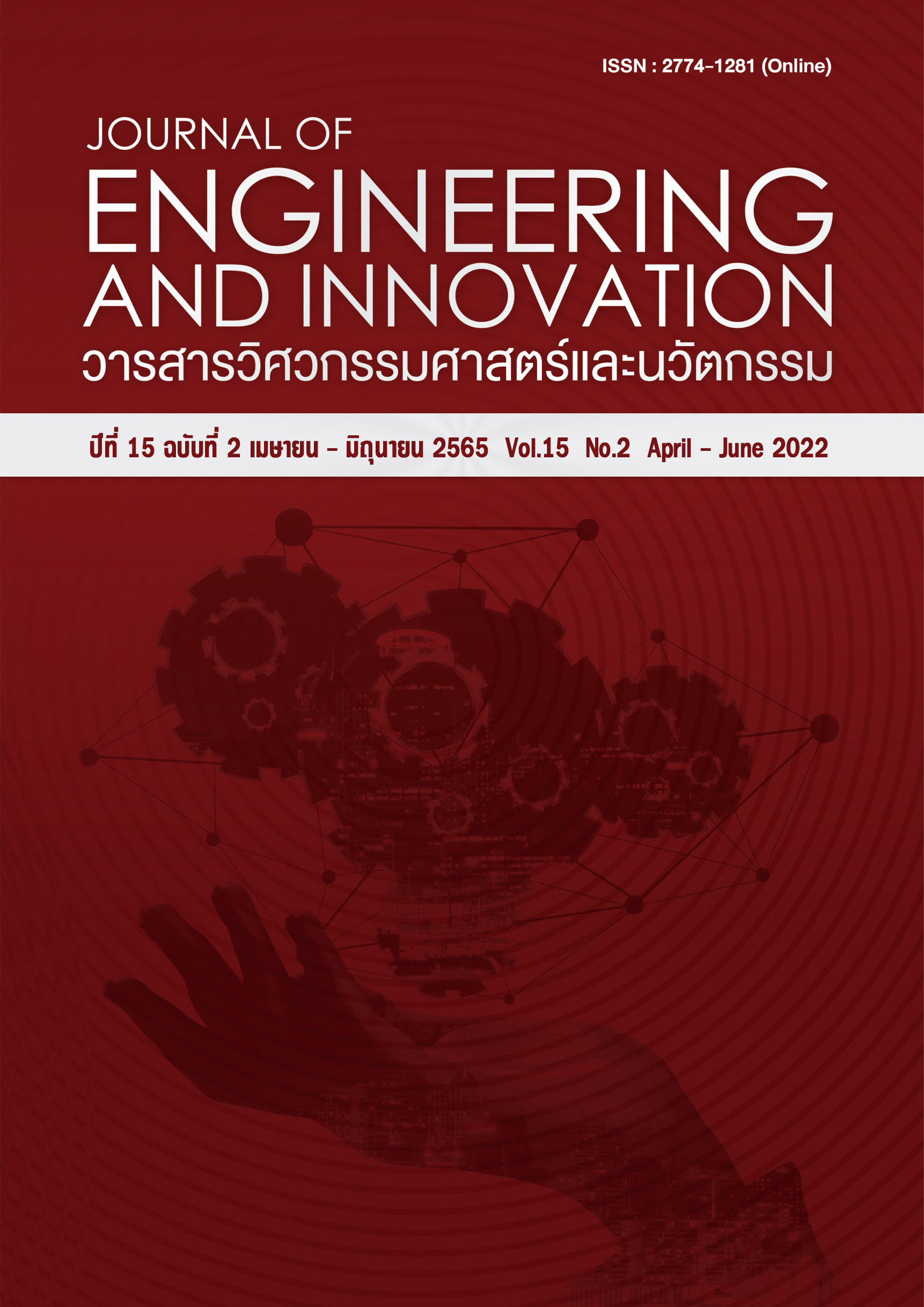Compression behavior of remolded cement-stabilized high swelling clay
Main Article Content
Abstract
The article presents the effect of cement on the index and compression properties of remolded cement-stabilized high swelling clay for clay liner material in a waste landfill. The clay sample was high plasticity clay mixed with cement at a cement content of 10 % to 50 % by weight of dry soil. The cement-stabilized high swelling clay was remolded at a curing time of 28 days. Index properties and 1-D consolidation were investigated. Cement content affected on index properties of soil samples. Specific gravity, free swelling ratio, liquid limit, and plastic limit of the soil sample tended to decrease with an increase in cement content. The void ratio of remolded cement-stabilized high swelling clay increased at particular vertical stress as the cement content increased until the optimum cement content (Aw20%). Then the void ratio of remolded cement-stabilized high swelling clay decreased as the cement content increased. This is because the products obtained from hydration and pozzolanic reactions increase resulted in a decrease in the thickness of the diffuse double layer. The coefficient of compressibility and permeability of the soil sample increased with an increase in cement content. This is because soil particles flocculate, resulting from hydration and pozzolanic reactions of cement. The coefficient of permeability proposed by Nagaraj et al. was not suitable for both high swelling clay and cement-stabilized high swelling clay. According to all consolidation test results, this paper modified the normalized equation with various swelling clay characteristics, which is useful for predicting the consolidation of other remolded clays and remolded cement-stabilized clays.
Article Details
References
Burland JB. On the compressibility and shear strength of natural clays. Geotechnique. 1990; 40(3): 329-378.
Mitchell JK. Fundamentals of soil behavior. New York: John Willey & Sons Inc.; 1996.
Nagaraj TS, Srinivasa Murthy BR, Vasala A, Joshi RC. Analysis of compressibility of sensitive clays. Journal of Geotechnical Engineering, ASCE. 1990; 116(GT1): 105–118.
Nagaraj TS, Pandian NS, Narasimha Raju PSR. Compressibility behavior of soft cemented soil. Geotechnique. 1998; 48(2): 281-287.
Nagaraj TS, Miura N. Soft clay behavior: Analysis and assessment. Balkema, Rotterdam. 2001; 315.
Horpibulsuk S, Shibuya S, Fuenkajorn K, Katkan W. Assessment of engineering properties of Bangkok Clay. Canadian Geotechnical Journal. 2007; 44(2): 173-187.
Nagaraj TS, Srinivasa Murthy BR. A critical reappraisal of compression index equations. Geotechnique. 1986; 36(1): 27-32.
Nagaraj TS, Pandian NS, Narasimha Raju PSR. Stress state-Permeability relationships for fine-grained soil. Geotechnique. 1993; 43(2): 333-336.
HorpibulsuK S, Yangsukkasem N,
Chinkulkijniwat A, Du YJ. Compressibility and permeability of Bangkok clay compared with kaolinite and Bentonite. Journal of Applied clay Science. 2011c; 52: 150–159.
Butterfield R, Baligh F. A new evaluation of
loading cycles in an oedometer. Geotechnique. 1996; 46: 547-553.
Prakash K, Sridharan A. Free swell ratio and clay mineralogy of fine-grained soil. Geotechnical Testing Journal, ASTM. 2004; 27 (2): 220-225.
ASTM International. ASTM D D2435/D2435M-11-Standard Test Methods for One-
Dimensional Consolidation Properties of Soils Using Incremental Loading. 2011.
Herzog A, Mitchell JK. Reactions accompanying stabilization of clay with cement. In Highway Research Record 36, HRB. National Research Council, Washington, D.C. 1963; 146-171.
Bergado DT, Anderson LR, Miura N, Balasubramaniam AS. Soft ground improvement in lowland and other environments. ASCE, New York. 1996.
Schaefer VR, Abramson LW, Drumheller JC, Sharp KD. Ground improvement, ground reinforcement and ground treatment: Developments 1987 to 1997. ASCE Geotech. Special Publication. 1997; 69.
Prusinski, JR, Bhattacharja S. Effectiveness of portland cement and lime in stabilizing clay soils. In Transportation Research Record: Journal of the Transportation Research Board, TRB. National Research Council, Washington D.C. 1999; No. 1652; 215–227.
Chew SH, Kamruzzaman AHM, Lee FH. Physicochemical and engineering behavior of cement treated clays. Journal of Geotechnical and Geoenvironmental Engineering, ASCE. 2004; 130(7): 696–706.
Sridharan A, Rao SM, Murthy NS.
Compressibility behavior of homoionized bentonites. Geotech-nique. 1986a; 36(4): 551-564.
Sridharan A, Rao SM, Murthy NS. Liquid limit of montmorillonite soils. Geotechnical Testing Journal AST. 1986b; 9(3): 156-159.
Sridharan A, Murthy NS, Prakash K.Rectangular hyperbola method for consolidation analysis. Geotechnique. 1987; 37(3): 355-368.
กรมควบคุมมลพิษ กระทรวงวิทยาศาสตร์และเทคโนโลยีและสิ่งแวดล้อม. เกณฑ์มาตรฐาน และแนวทางการจัดการขยะมูลฝอยชุมชน. กรุงเทพ ฯ: โรง

